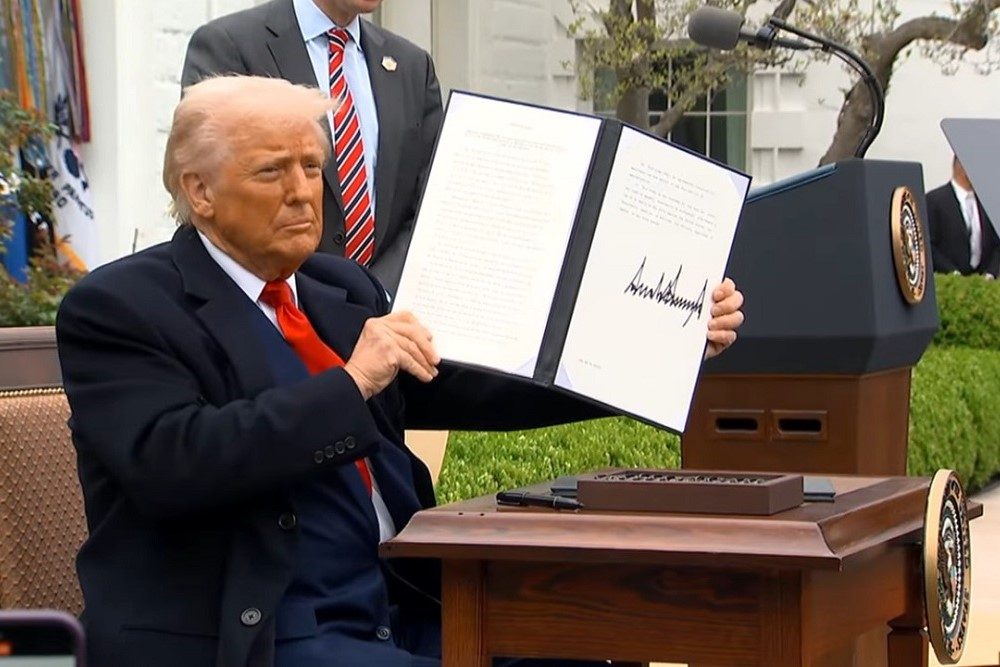The recent announcement of new tariffs by Donald Trump has caused a ripple of reactions across global markets. Businesses from various sectors are now re-evaluating their strategies as they prepare for the impact of these trade changes. With new import taxes ranging from 10% to 41%, many companies find themselves in a state of uncertainty—unsure whether to brace for disruption, adapt quickly, or find alternative solutions.
El numeral arancelario forma parte de una iniciativa más amplia por parte de Trump para reorganizar las relaciones comerciales globales. A pesar de que la intención podría ser proteger las industrias nacionales, la situación es más complicada. Las empresas a nivel mundial, incluidas las de Estados Unidos, están evaluando ahora los posibles costos de operar bajo estas nuevas condiciones.
An urgent worry for various sectors is the rising expense of imported commodities. For producers, especially those dependent on components or raw materials from other countries, the escalation in costs might alter manufacturing budgets. Industries like car manufacturing, technology devices, home equipment, and certain food businesses are anticipated to encounter the strain initially. As materials get pricier, it generally results in increased consumer prices or lower profit margins for businesses.
For exporters, the problem shifts slightly. Some countries now face tariffs that may make their goods less attractive or affordable in the U.S. market. This could reduce sales, cut into revenue, and even lead to job losses if demand drops significantly. For smaller businesses that depend on stable cross-border relationships, the challenge could be even more pronounced.
The financial markets have responded in kind. In the days following the announcement, several stock indexes experienced mild volatility. Investors are known to react quickly to policy changes that could affect trade and economic stability, and this case has been no different. Some sectors have seen more pressure than others, especially those heavily involved in global supply chains.
Despite the initial concerns, not all businesses are reacting with panic. In fact, some see the tariffs as manageable or even an opportunity. Countries or regions receiving lower tariffs may use the moment to reinforce trade ties with the U.S., offering incentives or partnerships to strengthen business relationships. Others may redirect exports to alternative markets, diversifying their client base to reduce dependence on any one country.
In the U.S., domestic companies are also weighing their options. For many, absorbing the new costs may not be sustainable in the long term. Some plan to raise prices, while others are reviewing their supply chains to find local or tariff-free suppliers. This process of realignment could take time and may affect how efficiently they operate.
Retailers and consumers might notice differences too. If the increased costs of imports are transferred along the supply chain, the prices of daily items might go up. This is especially worrisome for households and people already dealing with limited budgets. Should inflation speed up because of tariff-related hikes, it could emerge as a fresh challenge for the wider economy.
Nonetheless, not all enterprises view the situation as unfavorable. Certain U.S. producers are in favor of the action, anticipating that it might foster an increase in local manufacturing and limit international rivalry. These businesses claim that the tariffs might ultimately result in job generation and enhanced industrial expansion across the nation. Yet, this result hinges on various elements, such as consumer interest, the availability of workforce, and the capacity of local companies to expand production.
Apart from the economic aspects, the political implications of the tariffs hold considerable importance. Trump’s trade strategy prioritizes national priorities, encourages local manufacturing, and aims to adjust trade imbalances. Regardless of whether people support or oppose this tactic, the tariffs clearly indicate that international companies need to remain flexible and adaptive in a rapidly shifting environment.
Over an extended period, the complete impact of these actions is yet to be fully understood. It can take time for tariffs to permeate through the markets and supply networks. Certain consequences will be felt quickly, while others might develop progressively over several months. Companies that anticipate, broaden their suppliers, and keep themselves updated will be better equipped to handle the challenges.
There’s also the question of how other governments might respond. Retaliatory tariffs or revised trade agreements could emerge, changing the global trade map even further. For multinational companies, this adds yet another layer of complexity to their operations and planning.
The recent tariffs enacted by Trump have triggered varied responses—ranging from worry and doubt to tactical preparation and guarded hopefulness. Whether the net impact will be beneficial or harmful primarily hinges on the speed of business adaptation and government reactions. What is clear is that international trade has grown more volatile, and adaptability will be crucial for companies striving to stay competitive in this evolving terrain.




